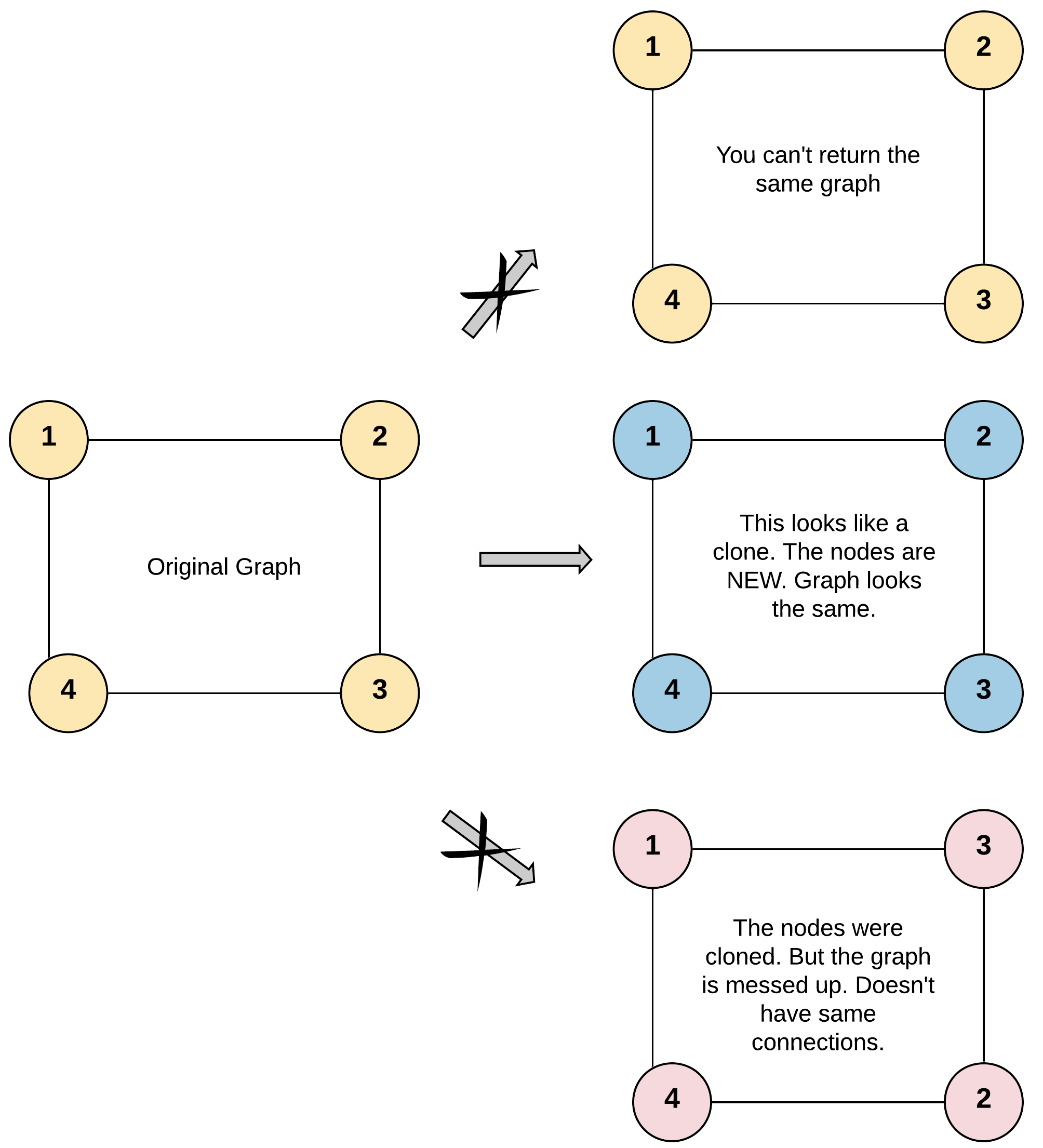g0101_0200.s0133_clone_graph.readme.md Maven / Gradle / Ivy
Go to download
Show more of this group Show more artifacts with this name
Show all versions of leetcode-in-kotlin Show documentation
Show all versions of leetcode-in-kotlin Show documentation
Kotlin-based LeetCode algorithm problem solutions, regularly updated
133\. Clone Graph
Medium
Given a reference of a node in a **[connected](https://en.wikipedia.org/wiki/Connectivity_(graph_theory)#Connected_graph)** undirected graph.
Return a [**deep copy**](https://en.wikipedia.org/wiki/Object_copying#Deep_copy) (clone) of the graph.
Each node in the graph contains a value (`int`) and a list (`List[Node]`) of its neighbors.
class Node { public int val; public List neighbors; }
**Test case format:**
For simplicity, each node's value is the same as the node's index (1-indexed). For example, the first node with `val == 1`, the second node with `val == 2`, and so on. The graph is represented in the test case using an adjacency list.
**An adjacency list** is a collection of unordered **lists** used to represent a finite graph. Each list describes the set of neighbors of a node in the graph.
The given node will always be the first node with `val = 1`. You must return the **copy of the given node** as a reference to the cloned graph.
**Example 1:**

**Input:** adjList = [[2,4],[1,3],[2,4],[1,3]]
**Output:** [[2,4],[1,3],[2,4],[1,3]]
**Explanation:** There are 4 nodes in the graph.
1st node (val = 1)'s neighbors are 2nd node (val = 2) and 4th node (val = 4).
2nd node (val = 2)'s neighbors are 1st node (val = 1) and 3rd node (val = 3).
3rd node (val = 3)'s neighbors are 2nd node (val = 2) and 4th node (val = 4).
4th node (val = 4)'s neighbors are 1st node (val = 1) and 3rd node (val = 3).
**Example 2:**

**Input:** adjList = [[]]
**Output:** [[]]
**Explanation:** Note that the input contains one empty list. The graph consists of only one node with val = 1 and it does not have any neighbors.
**Example 3:**
**Input:** adjList = []
**Output:** []
**Explanation:** This an empty graph, it does not have any nodes.
**Constraints:**
* The number of nodes in the graph is in the range `[0, 100]`.
* `1 <= Node.val <= 100`
* `Node.val` is unique for each node.
* There are no repeated edges and no self-loops in the graph.
* The Graph is connected and all nodes can be visited starting from the given node. 